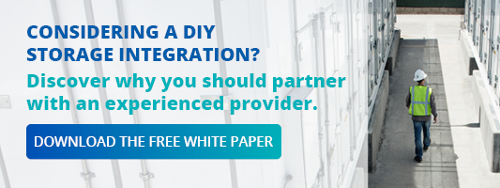Changing revenue stacks, lower market returns, and regulatory uncertainty - energy storage in Great Britain and Ireland is experiencing a period of change. Successfully navigating these issues can be challenging even for experienced market participants. In this blog, we’ll explore how to deliver long-term value and maximise a project’s return.
By the end of 2023, over 4 GW of battery-based energy storage was operational across Great Britain and Ireland, two of the leading energy storage markets in Europe, with the buildout continuing to increase in 2024. As island systems with high renewable penetration and congested grids, both markets have a critical need for storage. In Ireland alone, 1,280 GWh of wind, equivalent to 8% of all wind generation, was curtailed in 2022. Without intervention, the volumes of curtailed energy will only grow as renewables continue to be deployed at pace.
All island wind generation and dispatch down volumes
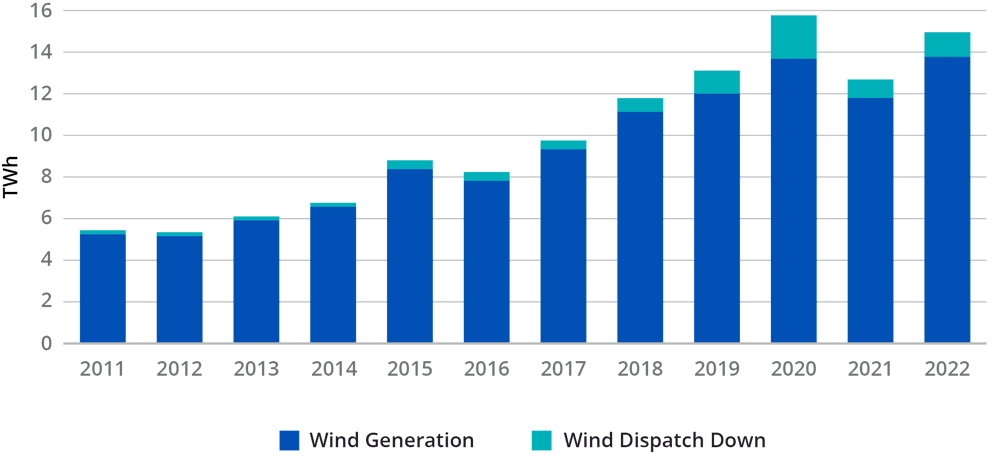
Figure 1. Wind curtailment in the Irish market (Source: Annual-Renewable-Constraint-and-Curtailment-Report-2022-V1.0.pdf)
Despite significant growth already, further decarbonisation of the generation mix dictates the need for greater storage deployment. Without storage, renewable goals will not be met. All of this attracts new parties eager to get involved in the market. So, what should storage developers, owners, and operators focus on in an evolving and competitive market? In this blog, we will explore the changing themes of both markets and the importance of operating flexibly and working with trusted partners.
What is Happening in These Markets
Great Britain
Market volatility caused by the energy crisis in 2022 fueled high revenues for battery storage with strong returns across most durations, sizes, and locations. In 2023, there was a notable shift as markets normalized, more assets came online, and capacity exceeded National Grid Electricity System Operator’s (NGESO) immediate requirements for dynamic services. In stark contrast to 2022, the industry has faced underwhelming returns. In search of better revenues, optimizers turned to the wholesale markets and balancing mechanism. This is a more complex optimization strategy, leading to greater divergence in the performance of assets. Despite recent dips in revenues, there has been no shortage of interest in new projects. Market participants remain confident in the long-term opportunity as ever-growing renewable penetration creates greater market volatility and attractive arbitrage opportunities.
However, with these changing market dynamics come new challenges. Operating in the wholesale markets and balancing mechanism is leading to assets cycling more and degrading faster – a critical problem as owners look to extract maximum value from their assets.
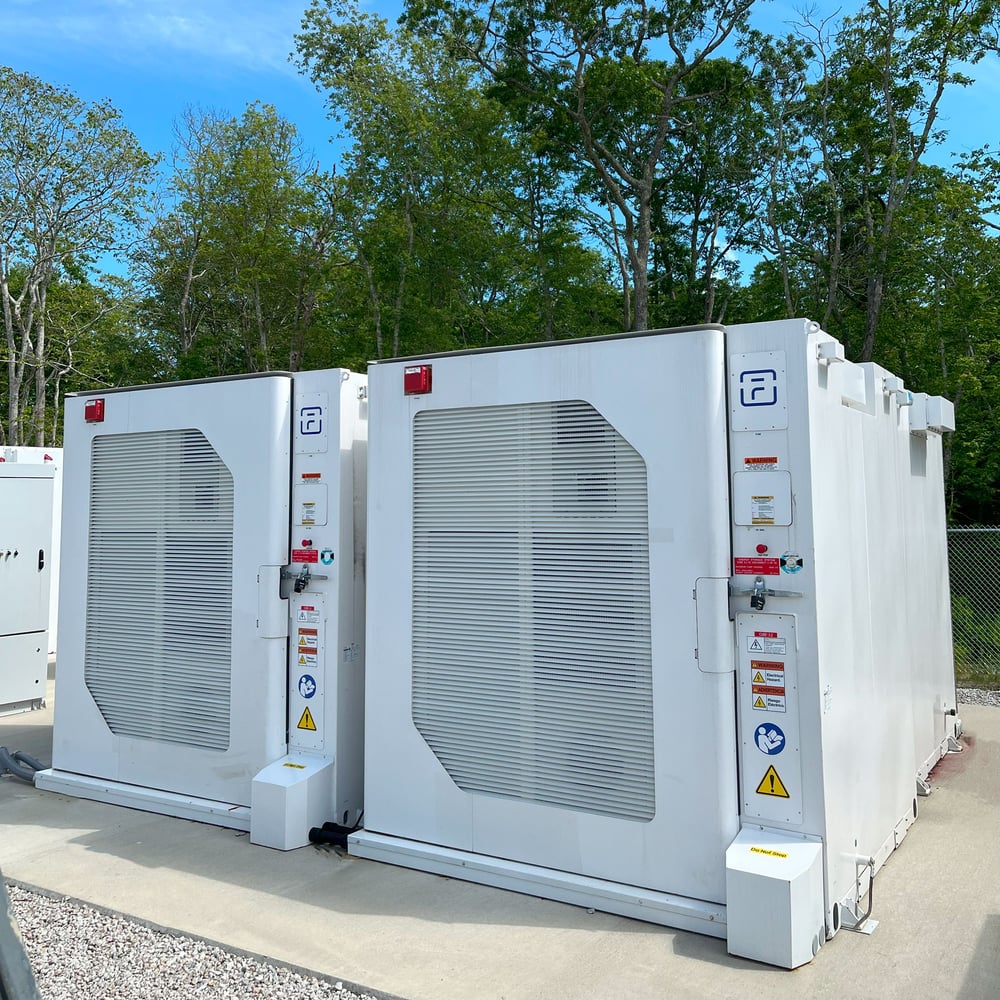
Ireland
Ireland has faced slightly different challenges. Some similarities still exist, such as connection and land constraints. However, unlike in Great Britain, the buildout of battery storage in Ireland has stagnated of late. This can be largely attributed to uncertainty around the future revenue streams and the lack of market access for storage. DS3, a programme for procuring various services to deliver grid stability, has formed the business case for storage in Ireland and provided reliable revenue. However, uncertainty around how system services will be procured in the future and the limitations of the wholesale trading revenues has left the industry seeking certainty to further buildout storage.
How to Succeed in These Markets
Higher cycling of the storage assets, strong competition, and uncertain revenues – those are the main challenges participants of the Great Britain and Irish markets face. So, how can developers, owners, and operators ensure they maximise returns?
Speed and Reliability
With developers experiencing connection and permitting delays, speed of deployment is critical in maximizing projects’ profitability. Waiting years for projects to be connected to the grid will have already reduced the return on investments, so any additional delays before energization will further impact the business case. Many services, such as the Irish DS3 markets, have windows of opportunities during which an asset needs to register to deliver. If missed, the asset owners lose out on significant revenue. A month delay on a 100 MW project can mean millions in lost revenue, while the battery asset sits idle and the cells even begin to degrade.
In a highly competitive market, many companies promise ambitious delivery and installation timelines, sometimes underestimating the complexity of the challenge. Choosing trusted partners with a strong track record and a robust supply chain reduces the risk of project delays.
A diversified supply chain has three critical components: expertise, volume, and experience. These should be carefully considered to ensure fast delivery, high quality, and consistency.
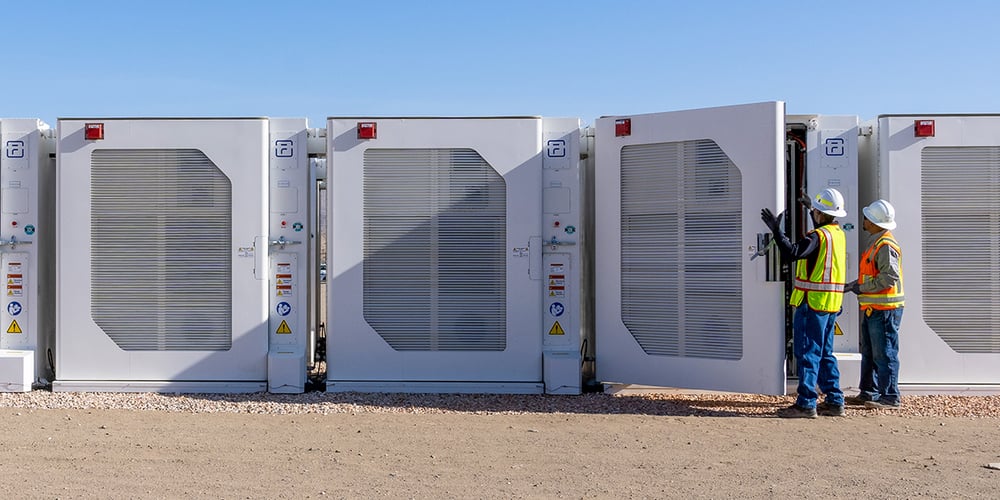
Environmental, Social, and Governance, and Safety
The topics of Environmental, Social, and Governance (ESG) and safety might not seem immediately relevant when discussing how to increase returns in uncertain markets. However, at Fluence, we see them as critical elements and the building blocks of a successful long-term strategy for energy storage.
As the industry matures, the focus on sustainability, ESG, and safety will continue to grow. Increased media attention around the safety of battery storage systems can create negative sentiment for what is a proven and reliable technology, providing blockers to its buildout. Moreover, regulators are waking up to the increasing impact of batteries and energy storage, and put hard guardrails around ESG requirements for energy storage. For example, the European Battery Directive or the Corporate Sustainability Due Diligence Directive that is currently under discussion. For investors, safety is a core metric to ensure the success of a project. From planning through to financing, having a proven storage system with leading safety features provides confidence in asset performance during its lifetime. These assurances will help secure permitting and provide the bankability financers require. It has real impacts on financing and operational costs.
Solutions providers should look to face these challenges head-on, meeting and exceeding existing safety protocols and delivering large-scale fire tests that set new standards for the industry to follow. While the details of how a large-scale fire test should be performed are not yet clearly defined in the industry, Fluence has taken the lead with its own large-scale fire tests to create an extreme event to demonstrate the behaviour of an enclosure fire in a setup that resembles a real energy storage installation. Using Gen 6 Gridstack enclosures, the fire was contained to the initiating unit, and thermal runaway did not propagate to the neighboring Cubes.
Such proactive efforts as well as the publication of our inaugural Sustainability Report last year have, among others, contributed to Fluence being ranked as the most bankable energy storage system provider globally in the BloombergNEF Energy Storage System Cost Survey 2023.
.jpg?width=1000&height=667&name=DSC06420%202%20(1).jpg)
Flexibility and Efficiency in Approach
Even before any contract has been signed, it’s critical to have flexible and efficient internal processes to reach a final investment decision. Regulation is rapidly evolving as the grid operators adapt to a renewable-based energy system. Revenues are changing, as optimisers react by seeking value in new markets. Having flexibility to enable quick and informed investment decisions when the time dictates will be critical in ensuring first mover advantage and maximizing returns on the asset.
Being able to adapt to changing market conditions also extends to the design and operation of the battery asset. Flexibility also extends to how assets are designed. It’s important that the system is built for future markets, maximizing revenue potential not just in the short term but also for the total lifetime of the asset. Duration is a key piece to this puzzle.
The first large-scale assets were focused on frequency markets, with a 30-minute duration often being optimal. However, in Great Britain, energy storage systems are now being built for up to 4 hours of duration as revenues move to wholesale market trading. Longer durations provide greater protection against the impact of degradation as batteries cycle more in these markets. In Great Britain, the market saw cycling increase significantly. Although most assets now still operate at just under 1 cycle per day, the market consensus is that this will move towards an average of 2 cycles per day (and sometimes more) as arbitrage opportunities continue to grow.
Battery cycling increased throughout 2023, averaging an all-time
high of 1.01 cycles per day in Q4
Daily Cycles of all grid-scale batteries in Great Britain
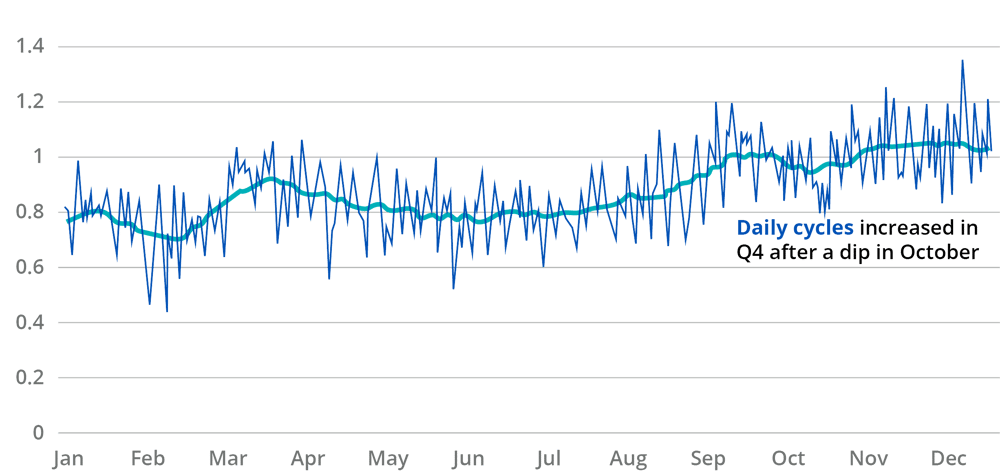
Figure 2. Modo Energy - Battery cycling in the GB market (Source: Battery cycling: How did strategy and revenues change in Q4? | Modo Energy)
Flexible performance guarantees are critical in ensuring assets can be optimised for the best revenue and state of health. Through a series of adjustment formulas, Fluence stands behind the performance of the asset even if the power profile, energy throughput, or the expected state of charge varies throughout the asset’s life.
Predicting exactly how and when revenues will change is not easy. Working with a supplier who can support entry into new system services and provide flexibility in how assets are operated is key. Having an intimate understanding of the markets will ensure they are best placed to support owners and operators as services and requirements change. Additional AI-driven asset performance management tools, like those of Nispera, deliver real-live monitoring and insights to ensure maximum return on investment and asset longevity.
Preparing for a Changing Market
The energy market is changing and changing fast. There are many considerations for building and optimising energy storage systems. Below, we’ve broken down the three main things required to operate successfully in this changing environment:
Trusted Partners
Working with trusted partners and diversified supply chains is critical to success in this market. In a nascent industry with many recent entrants, there is a vast range of options to deliver a storage project. However, with such volatility in the market, having a trusted and reliable partner with a track record of performance will save time and cost in the long run.
Focus on the Fundamentals
It’s easy to get drawn into the short-term market trends. 2021 and 2022 were fantastic years for delivering in the frequency and dynamic services markets, but supply is now exceeding demand. Attention instead should be focused on how the energy system will look in 2030 and beyond and how your battery will help deliver against future system needs.
Flexible Operation
The energy storage market is constantly evolving with significant changes every year, be this from revenue, regulation, or material costs. Having the ability and processes in place to make decisions quickly and obtain the first mover advantage will help give the edge over competitors.
Despite the volumes of battery-based energy storage deployed in Great Britain and Ireland, both markets are only at the beginning of the energy transition. As the industry seeks to meet the huge requirement for storage, the regulatory environment, technology, and revenues are all evolving at pace. Navigating this changing world is undoubtedly challenging. Taking a sustainable, long-term approach with the right project partners will be key to achieving success in these markets.
















